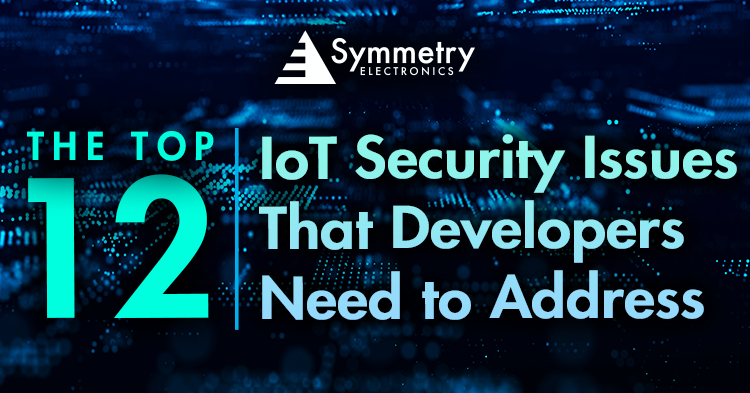- Home
- Braemac Blog
- 3 Places Where You Should Focus Your IoT Security Efforts
3 Places Where You Should Focus Your IoT Security Efforts
About Jari Haiston

Founded in 1985, Digi International is a pioneer in wireless communication and a leading provider of Internet of Things (IoT) solutions. Their recently released webinar, Three Key Focus Areas for IoT Security, aimed at helping organizations understand the importance of securing their IoT developments and provided expert insight into the three areas that organizations need to focus on to ensure the security of their IoT infrastructure.
The Need for Fortified Security in Connected Systems
IoT devices and connected systems are inherently susceptible to cyber threats and security breaches. According to IoT World Today, from January to June of 2021, there were approximately 1.51 billion breaches of IoT devices as opposed to 639 million in 2020. Some reasons why connected systems are particularly susceptible to cyberattacks include:
- The growing number of IoT devices
- Lack of standardization
- Potential for catastrophic consequences
- Personal data privacy
- Liability and reputation risks
Digi International’s webinar reminds developers that securing IoT devices extends beyond encryption and strong passwords. The purpose of IoT security is to prevent operational downtime, ensure that an organization’s customers feel safe and secure, protect personally identifiable (PI) data, and comply with government/industry standards. Additionally, securing IoT systems is a team effort involving manufacturers, customers, corporate users, the government, cloud services, and resellers. Every person/entity interacting with a connect system or device is responsible for security.
Common IoT Device Security Threats
Digi International classifies the following models as common IoT device security threats (Figure 1):
- Attacks on the boot process
- Physical attacks
- Lifecycle attacks
- Attacks on secure assets
- Firmware attacks
- Application attacks
The Challenges of Securing Connected, Artificially Intelligent, and Machine Learning Devices
Digi International suggests that the three places where developers should be focusing their IoT security efforts are connected, artificially intelligent (AI), and machine learning (ML) devices. However, there are some innate security challenges in the development and deployment of these types of devices.
IoT Development Security Challenges
- Long product development and approval processes
- Changing regulations (state, federal, and international)
- Evolving standards in security and encryption
- Security vulnerabilities in software
IoT Deployment Security Challenges
- Products deployed in insecure locations
- Inability to be deployed with other security assets
- Rapidly accelerating hacking and ransomware challenges
- Wireless connectivity security
- Device security and software upgrades
- Long-term support and decommissioning
Digi International's IoT Security Solutions
Fortunately, Digi International provides built-in security innovations to assist developers in securing their IoT devices. Digi TrustFence® is designed for mission-critical applications and helps developers easily integrate device security, device identity, and data privacy capabilities. It offers multiple layers of security, including secure boot, secure connections, and secure device management, to safeguard IoT devices throughout their lifecycle. With Digi TrustFence, IoT developers and manufacturers can confidently deploy their products in any environment without having to worry about security vulnerabilities or the risk of cyberattacks. This security framework is easy to integrate and offers peace of mind to users, making it an essential tool for the modern age of IoT.
Additionally, their Digi Embedded Yocto is a complete environment that provides secure mechanisms to ensure security of software in production. It extends from an open, unencrypted development environment to a production facility where final, signed/encrypted images are generated with private keys. It offers a flexible and customizable platform for developing and deploying IoT solutions, providing developers with the tools and resources they need to build robust and reliable applications. With Digi Embedded Yocto, developers can easily create a customized Linux distribution that is tailored to their specific needs, with support for a wide range of hardware and software components. This platform offers enhanced security features, including secure boot and encrypted communication, to help protect IoT devices from cyber threats. Overall, Digi Embedded Yocto is a powerful and versatile operating system that enables developers to build and deploy IoT solutions with confidence.
Conclusion
Digi International’s IoT security webinar defines IoT security implementation as a lifecycle. Securing your connected, AI, and ML devices is a continuous process that developers need to pay close attention to. Developers can minimize the risk of IoT-related security incidents and protect connected system infrastructure from attacks through Digi International’s comprehensive development solutions. Want more information? Watch Digi International’s full IoT security webinar now!

